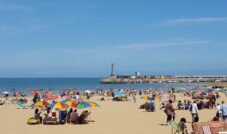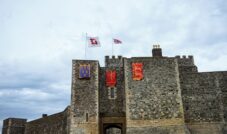Kent has many castles for a few reasons. Firstly, Kent is located on the southeastern coast of England, which made it a prime location for invasion throughout history. This meant that castles were built as defensive structures to protect against foreign invaders.
Secondly, Kent has a long and rich history, with many different cultures and civilizations leaving their mark on the region. For example, the Romans occupied Kent and built fortifications there, and after them, the Saxons and Normans built castles in Kent. This long history of occupation and settlement has left behind a wealth of historic buildings, including castles.
Thirdly, Kent has many strategic locations, such as ports and river crossings, which have made it an important region throughout history. This has led to the construction of castles to control and protect these important sites.
Finally, Kent has a landscape that is well-suited for castle building, with many hills, valleys, and rivers that provided natural defences and made it easier to build fortifications. All of these factors have contributed to the high number of castles in Kent.
Here are the oldest castles in Kent.
1. Rochester Castle (Founded 1087)
Rochester Castle was built soon after the Norman Conquest and has one of the tallest stone keeps in England. It played an important role in several battles, including a long siege in 1215. The keep was badly damaged but still stands today, giving visitors a sense of how impressive it was. Its location by the River Medway made it ideal for protecting the route to London. Visitors can walk through the keep, climb the tower stairs, and enjoy great views from the top.
Address: Castle Hill, Rochester ME1 1SW
Website: Rochester Castle

2. Dover Castle (Founded 11th Century)
Dover Castle is often called the “Key to England” because of its strong position near the English Channel. William the Conqueror started building it in the 11th century. Later, King Henry II added the Great Tower, which visitors can still explore today. The castle has been used in many wars, including World War II when tunnels underneath were used as a command centre. Visitors can explore medieval rooms, secret wartime tunnels, and a Roman lighthouse.
Address: Castle Hill, Dover CT16 1HU
Website: Dover Castle
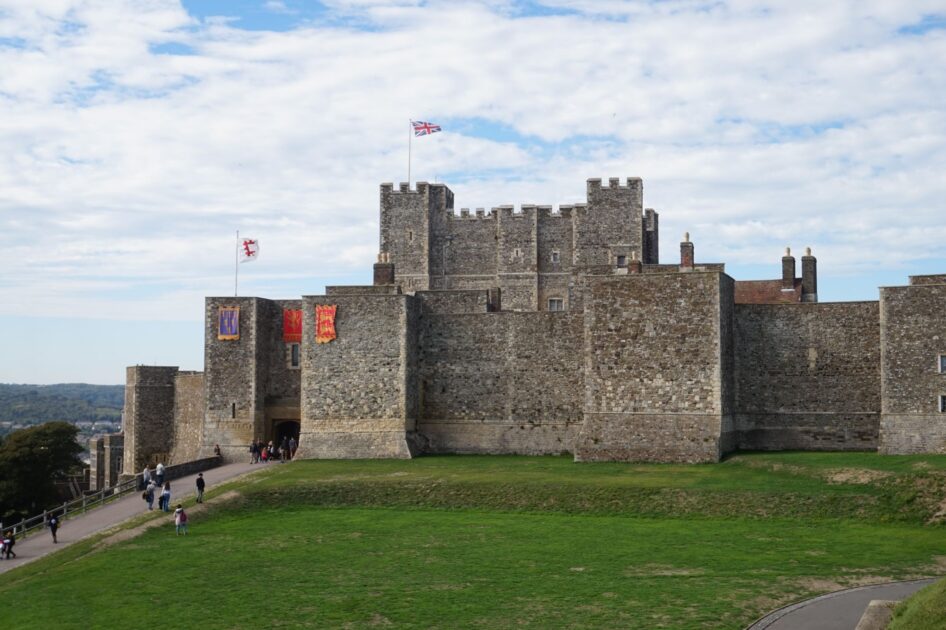
3. Canterbury Castle (Founded 11th Century)
Canterbury Castle is one of the three original Royal Castles built in Kent after 1066. Today, it is mostly ruins, but you can still see thick stone walls that show how strong it once was. The castle was once an important part of the city’s defences and held prisoners during the Middle Ages. Visitors can explore the remains and learn about Norman architecture and medieval life. It’s close to Canterbury Cathedral, making it a good stop on a historical walking tour.
Address: Castle Street, Canterbury CT1 2PR
Website: Canterbury Castle
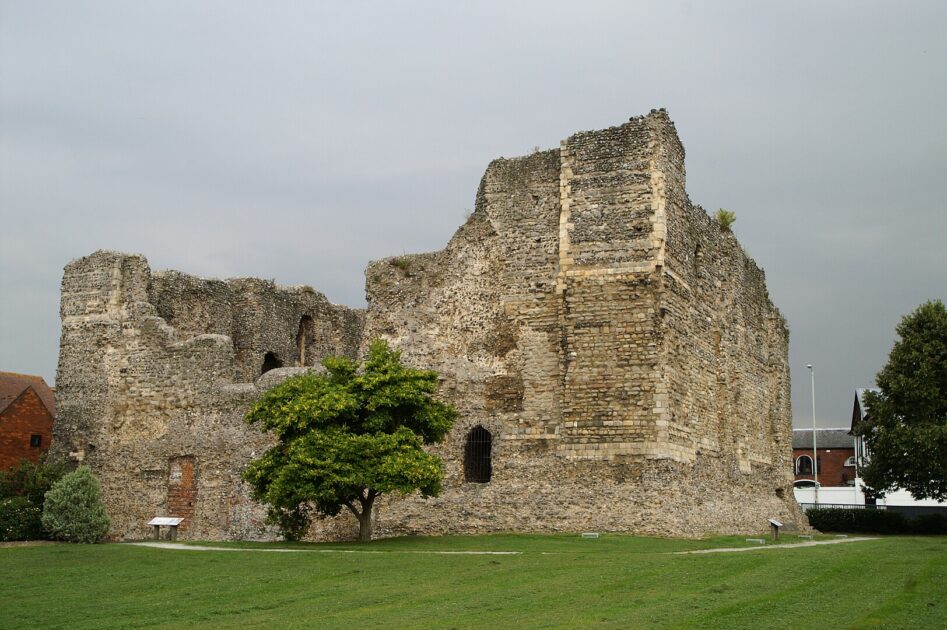
4. Tonbridge Castle (Founded 11th Century)
Tonbridge Castle began as a wooden motte-and-bailey castle built by a Norman noble, Richard Fitz Gilbert. In the 13th century, it was rebuilt in stone and a large gatehouse was added, which still stands today. The castle played a role in several conflicts and was visited by King Edward I. Visitors can explore the gatehouse, take an audio tour, and walk along the River Medway nearby. The grounds are also a popular place to relax.
Address: Castle Street, Tonbridge TN9 1BG
Website: Tonbridge Castle
5. Leeds Castle (Founded 1119)
Leeds Castle was first built as a Norman stronghold in 1119, but it became a royal residence for several queens of England, including Eleanor of Castile and Catherine of Aragon. In later centuries, it was transformed into a country home. The castle is surrounded by a lake and gardens, making it a scenic place to visit. Inside, the rooms show how people lived in different time periods. There are also exhibitions, a maze, and falconry displays.
Address: Broomfield, Maidstone ME17 1PL
Website: Leeds Castle
6. Allington Castle (Founded 12th Century)
Allington Castle started as a fortified manor in the 12th century, rebuilt later in the 13th century. It became a luxurious home during Tudor times and hosted famous visitors like Anne Boleyn. The castle was damaged during the Civil War and later restored in the 20th century. Today, it is privately owned but opens for tours and weddings by appointment. Its riverside setting and gardens make it a peaceful and historic site.
Address: Allington, Maidstone ME16 0NB
Website: Allington Castle
7. Queenborough Castle (Founded 1361)
Queenborough Castle was built by Edward III to defend the Isle of Sheppey and named in honour of Queen Philippa. It was the first castle in England with a completely circular design, built to guard against naval attacks. The castle was later abandoned and demolished during the English Civil War. Today, the earthworks remain in a park setting. Visitors can see the layout of the old walls and learn about its unique design through local information boards.
Address: Castle Keep, Castle Street, Queenborough ME11 5AS
Website: Queenborough Castle
8. Saltwood Castle (Founded 11th Century)
Saltwood Castle was originally built by the Normans and later given to the Archbishops of Canterbury. It is best known as the place where the knights stayed the night before they killed Archbishop Thomas Becket in 1170. Over the years, the castle changed hands many times. Although it is not open daily to the public, it is sometimes used for events and charity visits. Its tall walls and towers are still visible from the surrounding roads.
Address: Saltwood, Hythe CT21 4EH
Website: Saltwood Castle Info
9. Chilham Castle (Founded 12th Century)
Chilham Castle stands on the site of a Roman camp and was first built as a Norman fortress in the 12th century. The original keep was replaced in the early 1600s by a Jacobean mansion, but the medieval layout is still visible. The castle has been lived in for centuries and has appeared in movies and TV shows. It’s surrounded by formal gardens and overlooks the village square. The grounds occasionally open to the public in summer.
Address: Chilham Park, Chilham, Canterbury CT4 8DB
Website: Chilham Castle
10. Cooling Castle (Founded 1381)
Cooling Castle was built by John Cobham to defend against French raids coming up the River Thames. It had a rare square layout with strong corner towers and thick walls. The castle was attacked during a rebellion in 1554 and later fell into disrepair. Today, parts of the gatehouse and towers still stand. The site is next to a wedding venue and is not open for regular tours, but visitors can view it from nearby paths.
Address: Cooling, Rochester ME3 8DT
You might be interested in…
11. Hever Castle (Founded 13th Century)
Hever Castle began as a country house in the 1200s and was later turned into a fortified home. It’s best known as the childhood home of Anne Boleyn, the second wife of King Henry VIII. The castle has a double moat, a drawbridge, and beautiful Tudor-style rooms. In the early 1900s, it was restored by American millionaire William Waldorf Astor, who added Italian gardens and a lake. Today, visitors can explore the castle’s rich Tudor history, walk through the gardens, and enjoy family-friendly activities.
Address: Hever Road, Hever, Edenbridge TN8 7NG
Website: Hever Castle
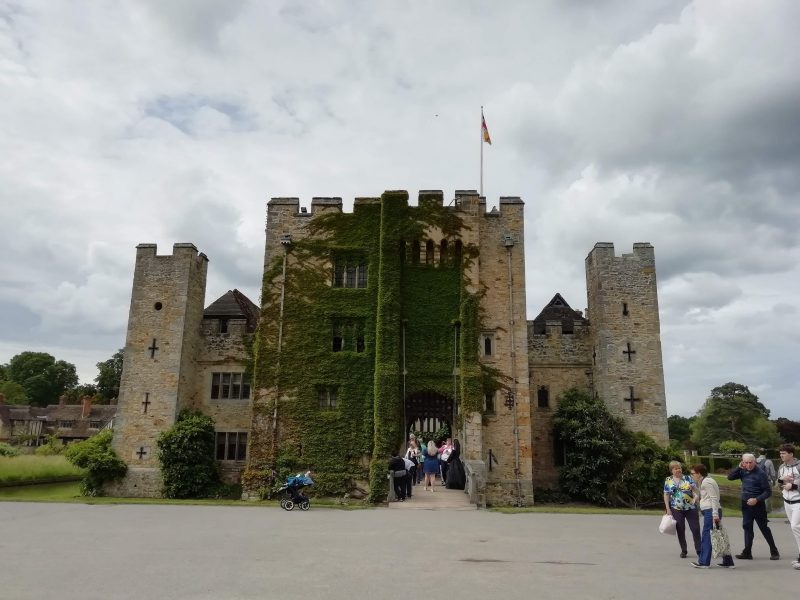
12. Westenhanger Castle (Founded 14th Century)
Westenhanger Castle was originally a medieval manor house that was fortified in the 14th century. It became a royal residence under Henry VIII and Elizabeth I. The castle had a moat, towers, and a large deer park. Though much of it is now in ruins, parts of the manor house and gatehouse remain. It’s used today as a wedding venue and opens for guided tours on select days. The site offers a peaceful setting with a strong sense of history.
Address: Stone Street, Westenhanger, Hythe CT21 4HX
Website: Westenhanger Castle
13. Bodiam Castle (Founded 1385)
Although just over the Kent border in East Sussex, Bodiam Castle is often included in Kent castle tours. Built by Sir Edward Dalyngrigge, it was designed to look impressive and defend against French invasion. Surrounded by a wide moat, it has round towers and a large gatehouse. The inside is mostly ruins, but the exterior is well preserved. Visitors can walk the battlements and enjoy views of the countryside.
Address: Bodiam, near Robertsbridge TN32 5UA
Website: Bodiam Castle
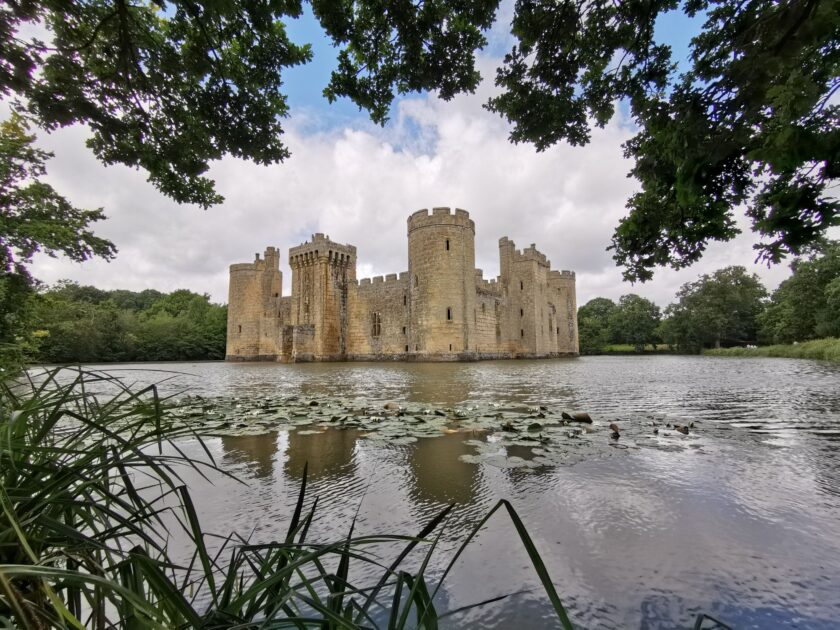
14. Scotney Castle (Founded 14th Century)
Scotney Castle includes the ruins of a 14th-century moated castle and a 19th-century country house. The old castle was partly demolished to create a romantic ruin, which now sits in landscaped gardens. The newer house is open to visitors and shows how people lived in Victorian times. The estate also has woodland walks and a hop farm.
Address: Lamberhurst, Tunbridge Wells TN3 8JN
Website: Scotney Castle
15. Lullingstone Castle (Founded 15th Century)
Lullingstone Castle began as a Tudor manor house and was later expanded. It was visited by Henry VIII and Queen Anne. The house is still lived in by the same family who built it over 500 years ago. The estate includes the World Garden, which features plants from around the globe. Visitors can tour the house, explore the gardens, and learn about plant exploration.
Address: Lullingstone Lane, Eynsford, Kent DA4 0JA
Website: Lullingstone Castle
16. Deal Castle (Founded 1539)
Deal Castle was built by order of King Henry VIII to defend the coast from invasion. It’s shaped like a flower with six round bastions and was designed to hold heavy cannons. The castle was used in later wars and is now managed by English Heritage. Visitors can explore the underground tunnels, climb the walls, and learn about Tudor defences.
Address: Marine Road, Deal CT14 7BA
Website: Deal Castle
17. Walmer Castle (Founded 1539)
Walmer Castle was also built by Henry VIII as part of his coastal defences. It later became the official residence of the Lord Warden of the Cinque Ports, a role held by the Duke of Wellington. The castle has comfortable rooms, formal gardens, and a museum with Wellington’s boots and death mask. Visitors can enjoy the gardens and walk along the seafront.
Address: Kingsdown Road, Walmer, Deal CT14 7LJ
Website: Walmer Castle
18. Upnor Castle (Founded 1559)
Upnor Castle is an Elizabethan artillery fort built to protect the Royal Navy dockyards at Chatham. It was used during the Dutch Raid of 1667, when enemy ships sailed up the River Medway. The castle has thick walls, gun platforms, and a riverside location. Visitors can explore the rooms, see old cannons, and learn about naval history.
Address: High Street, Upnor, Rochester ME2 4XG
Website: Upnor Castle
19. Chiddingstone Castle (Founded 16th Century)
Chiddingstone Castle was originally a Tudor house, later rebuilt in the 19th century to look like a medieval castle. It houses the collections of Denys Eyre Bower, including Japanese armour, Egyptian artefacts, and Buddhist art. The castle is surrounded by gardens and a lake. Visitors can tour the rooms and enjoy seasonal events.
Address: Hill Hoath Road, Edenbridge TN8 7AD
Website: Chiddingstone Castle
20. Thurnham Castle (Founded 12th Century)
Thurnham Castle is a small Norman ruin located on the edge of the North Downs. It was built by Robert of Thurnham in the 1100s using flint and stone. Only parts of the walls remain, but the site offers peaceful views and a chance to explore a quiet piece of history. It’s a short walk from the nearby village and is free to visit.
Address: Castle Hill Road, Thurnham ME14 3LE










